
 |
An
early Comet, with it's
Hammarlund supplied electro-dynamic speaker. It's
an
eight-tube superhet with on-board AC power supply. The radio
tuned
545KHz to 20MHz using five sets of plug-in coils. The
variable
capacitors, plug-in ceramic coil forms, and double tuned IF
transformers were all Hammarlund products. |
Technical Features
|
| There
are two 465KHz IF stages
with a total of six tuned circuits. The middle knob and drum
dial
are the main tuning control. The two controls to the right
and
left provide "vernier" tuning of the mixer and local
oscillator.
The toggle switch actuates a fixed-tuned BFO for CW
reception.
List price was $130, less tubes and cabinet. |
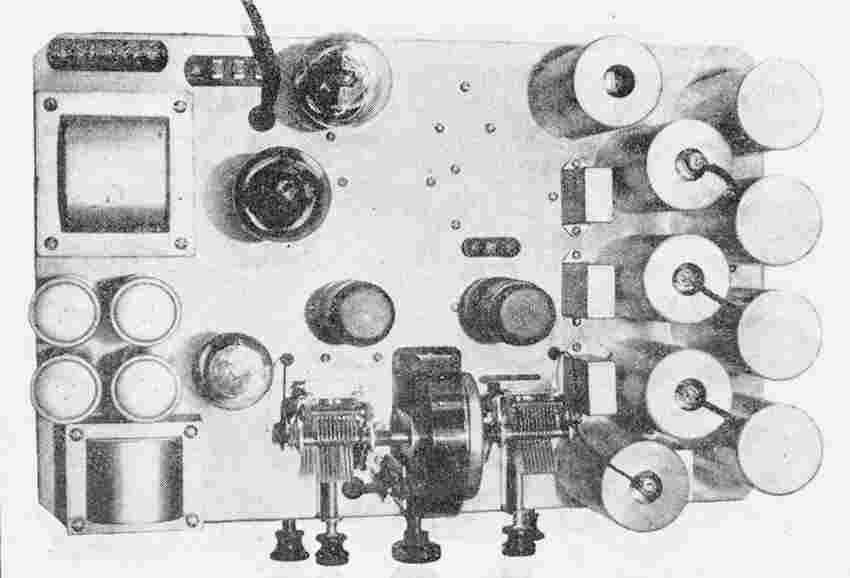 |
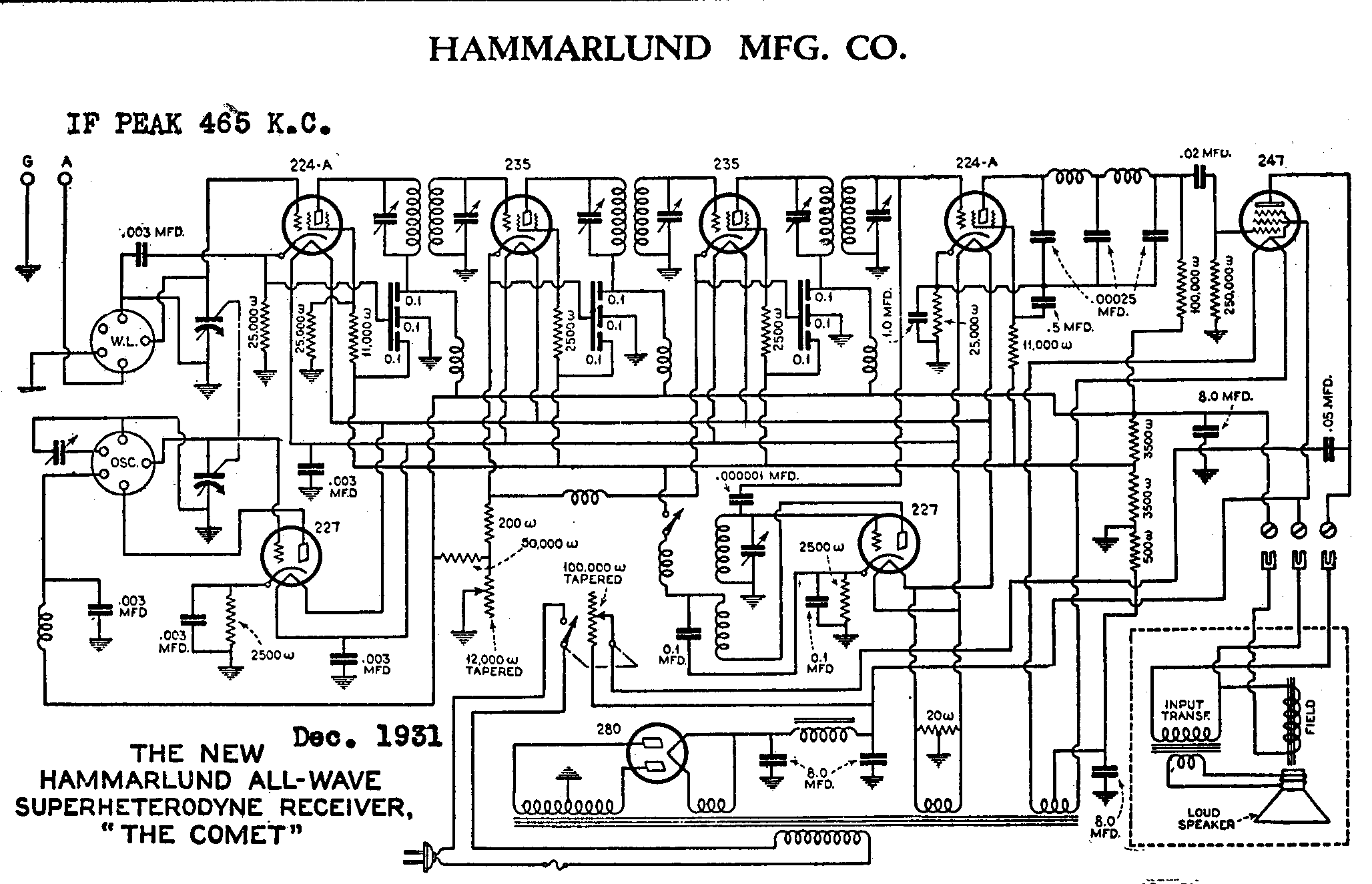 |
Technical Features
|
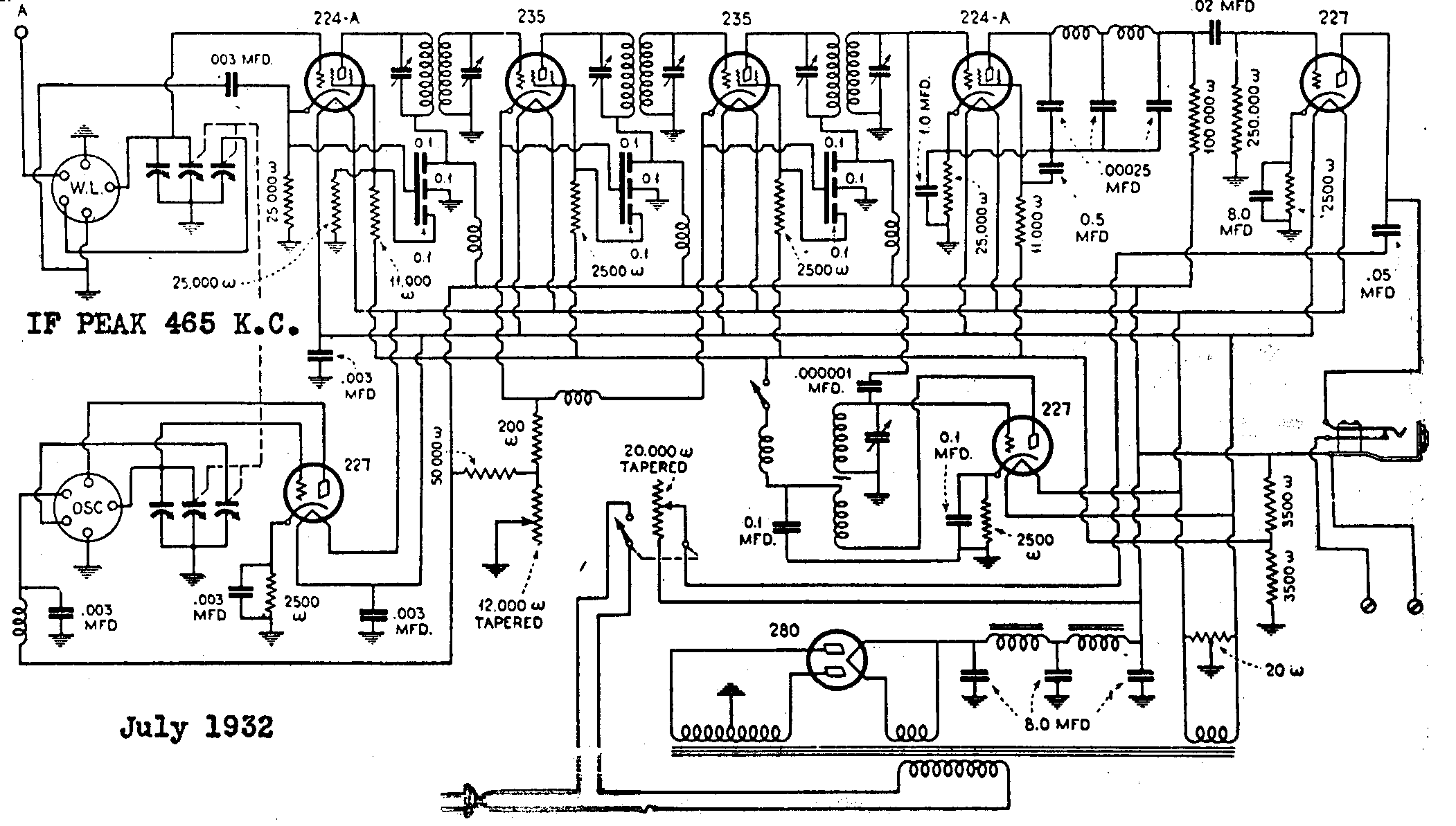 |
| The
early 1930's were a period of extremely rapid development of shortwave
receivers. The Comet Pro underwent a series of changes
throughout
it's life time. The schematic for the first major revision is
dated September 1932. The calibrated band-set dials have been
recessed behind the panel, and are now actuated by friction-type
reduction drives acting on the edge of the dials. Later
Comet
"Pro's" were housed
in a wrinkle-finished steel case. The crystal
filter model
is shown at the right. |
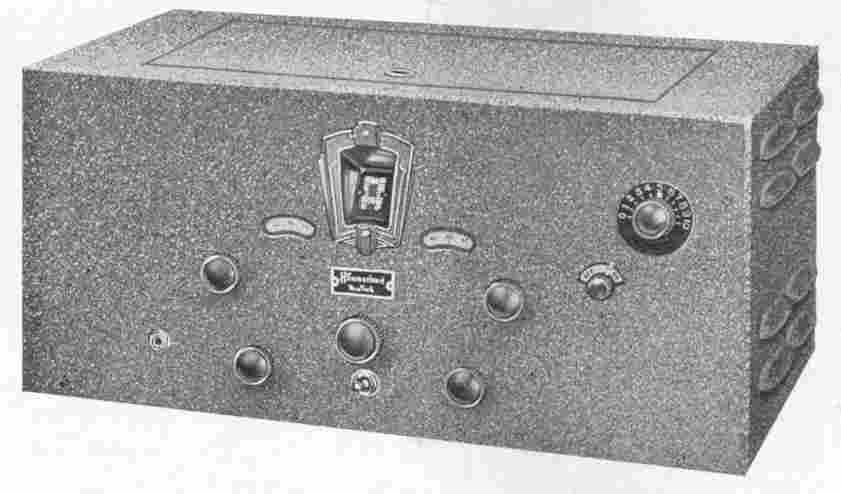 |
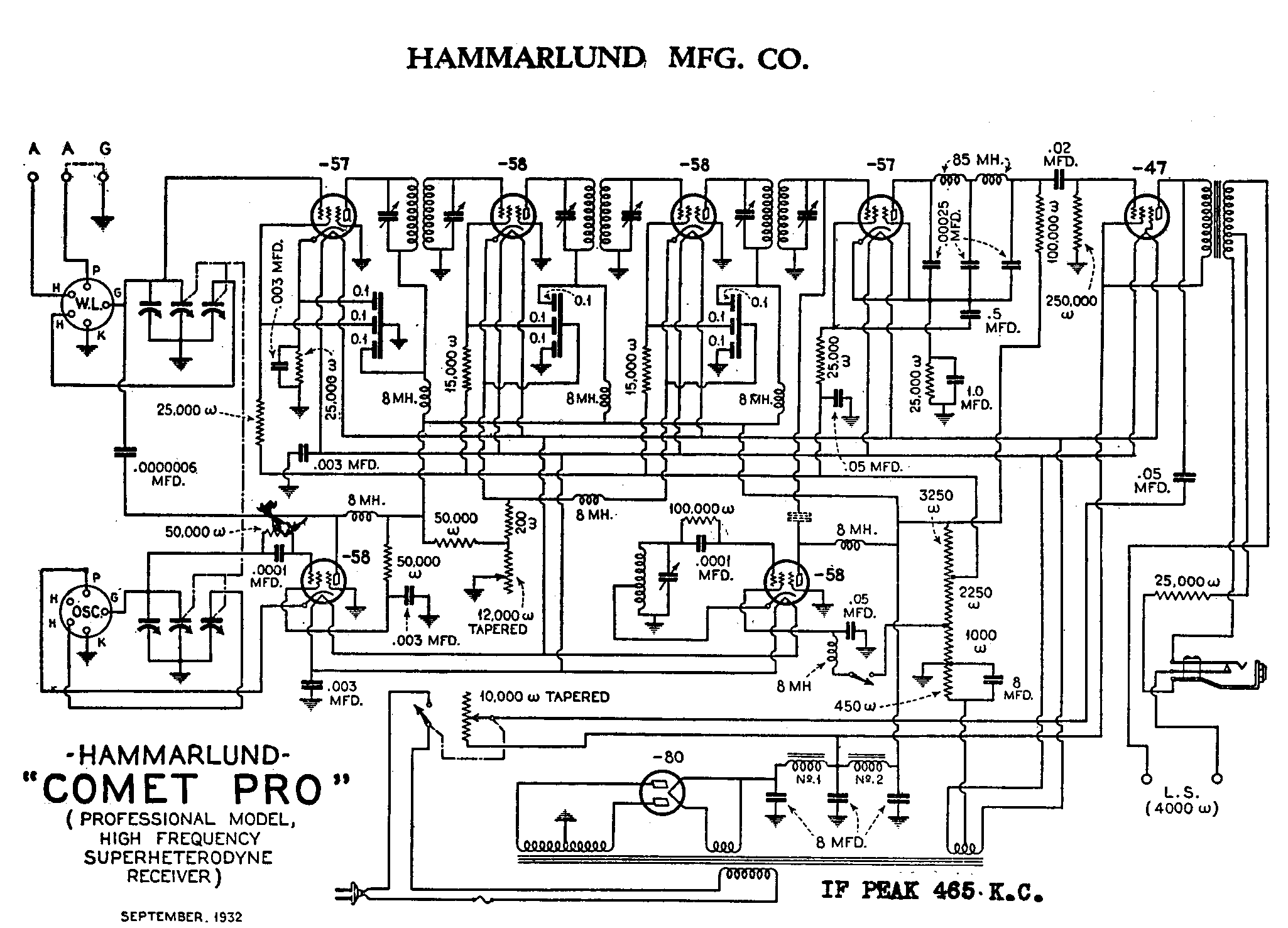 |
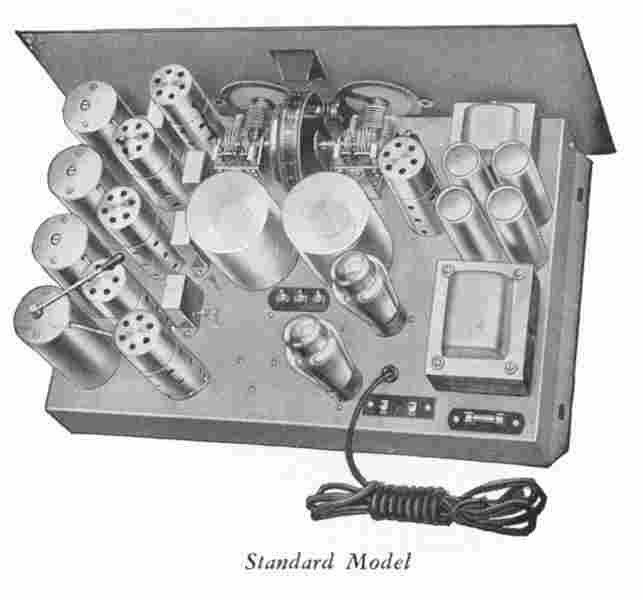 |
Inside:
A
tuning
handle has been incorporated into the BFO coil (lower left) to allow
operator adjustment. The
plug-in coils are
covered by cylindrical
shields to limit unwanted coupling. New
IF transformers, tuned by air-dielectric trimmers to acheive better
stability, were introduced in late 1932. |
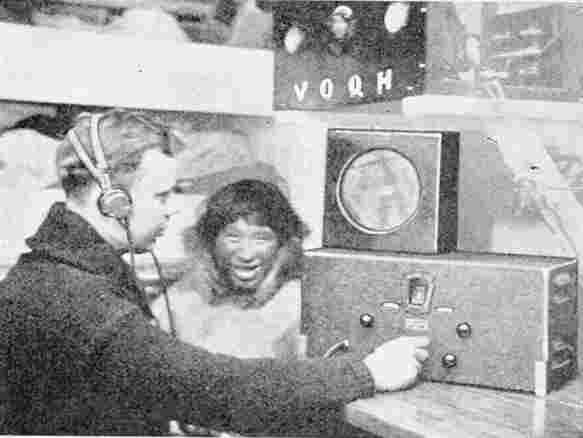 |
The
claims and counter
claims expounded in period advertising often make interesting
reading. For example, in October 1933 QST, McMurdo Silver
touts
that Admiral Byrd has chosen his 5A receiver for his next Antarctic
expedition. Two months later Hammarlund published a
testimonial
radiogram from an Arctic expedition complete with pictures of a walrus
and an Eskimo. |
| The
Comet Pro enjoyed considerable success in the commercial
market.
Here's a DC Comet Pro, one of several, modified by AT&T for use
as
frequency-selective voltmeters to service multiplex telephone
circuits. The added meters read signal level in dB and
battery
voltage. Custom coils tuned the LF band. (N3FRQ
Collection) |
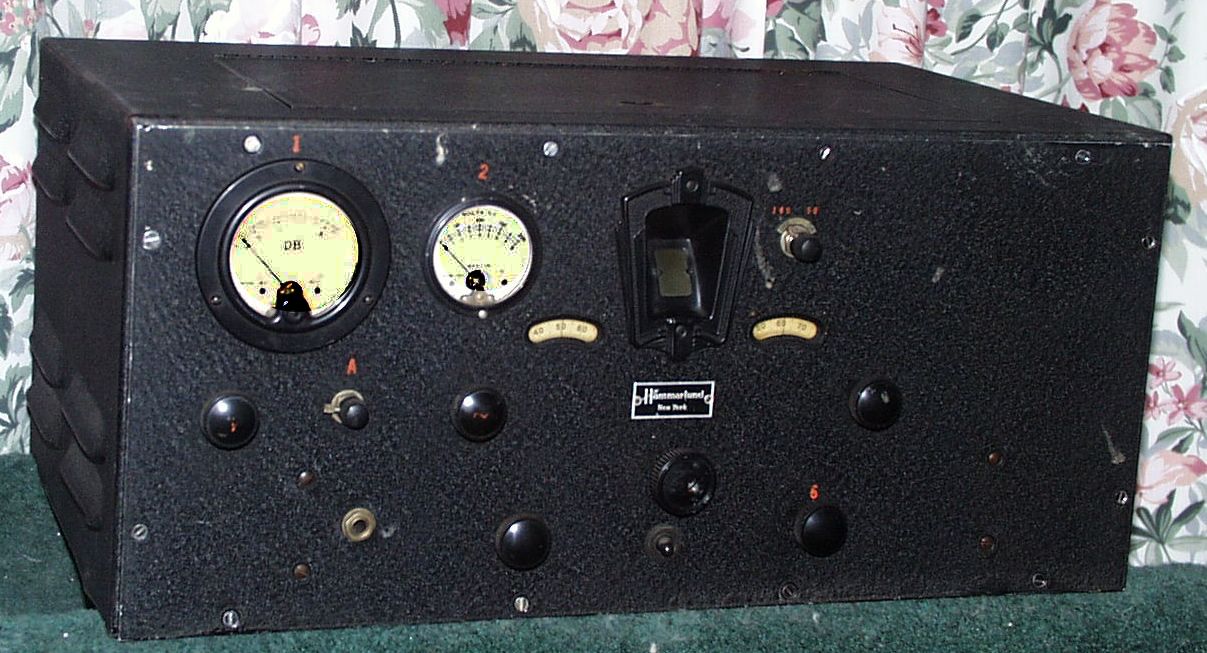 |
| AIRWAYS American Airways Eastern Air Transport Northwest Airways Transcontinental & Western Air,Inc. Inter-American Aero Travel and Supplies 44th Division Aviation,N.J. War Department, Air Corp., Wright Field BROADCAST SYSTEMS Columbia Broadcasting System Station WOR Station WOWO Station WAIU Station WINS Station WCAO Icelandic State Broadcasting Service, Reykjarik, Iceland Short Wave Station VE9GW, Canada Station CMKA, Cuba NEWS SERVICE American Radio News Service U. S. Embassy Santiago, Chile Argentine Embassy, Paris, France DOMESTIC COMMERCIAL SERVICE Georgia Agricultural Dept. Police Dept., Youngstown, O. Police Dept., Klamath Falls, Ore. Albany Junior Chamber or Commerce Mississippi State Penitentiary Hotel New Yorker NAVY DEPARTMENT Naval Research Labs., Washington U. S. S. Woodcock Radio Material School, Washington 9th Naval District U. S. Navy Yard, Charleston, S.C. Marine Corp., Signal Section |
WAR
DEPARTMENT Message Center, Washington Headquarters, 8th Corp Area, Fort Sam Houston Signal Section, San Frdncisco Signal Section, Honolulu, T. H. Signal Section, Manila, P. I. Signal Section, Corozal, C. Z. Headquarters, 4th Corp Area, Fort McPherson Headquarters, 9th Corp Area FOREIGN GOVERNMENT SERVICE Department of National Defense, Canada Director of Signals, Canada Director of Naval Stores Royal Administration of Telegraph, Stockholm Radio Nautica, Italy First Brigade Exchange, Haiti FOREIGN COMMERCIAL SERVICE Radio Electric, Switzerland Technish Bureau, Kolomen, Hoiland Prometheus, Greece Rothermel Corp, Belgium Eltone Ceritte, Italy Muvaffak Bey, Ankarg, Turkey Standard Oil Co. of Venezuela Harry Pegram, South Africa W. F. Greene, Dutch West Indies Pedro Perez, Saintz, Spain Post Exchange, Canal Zone PROMINENT AMATEURS IN ALL DISTRICTS |